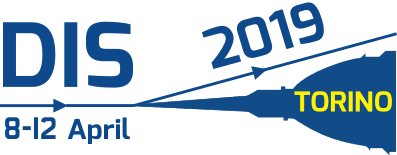Speaker
Description
A significant sample of $p^{\uparrow}p\to p\pi^{0} X$ events have been observed at STAR in $\sqrt{s}=200$ GeV
transversely polarized $pp$ collisions, where an isolated $\pi^0$ is detected in the forward
pseudorapidity range $2.65<\eta<3.9$ along with the forward-going proton $p$, which scatters with a
near-beam forward pseudorapidity into Roman Pot detectors. The sum of the $\pi^{0}$ and the scattered
proton energies is consistent with the incident proton energy of 100 GeV, indicating that no further
particles are produced in this direction. It is postulated that the forward incident proton may have
fluctuated into a $p+\pi^{0}$ system, with an angular momentum correlated with the initial proton spin. The
backward-going proton interacts with the $p+\pi^{0}$ system, which then separates such that the $\pi^{0}$ has
a transverse momentum of ${\sim}2$ GeV/$c$ and the proton has a transverse momentum of ${\sim}0.2$
GeV/$c$, while the backward proton shatters into the remaining particles $X$, all in the backward
direction. Correlations between the $\pi^0$ and scattered proton will be presented, along with single
spin asymmetries which depend on the azimuthal angles of both the pion and the proton. This is the first
time that spin asymmetries have been explored for this process, and a model to explain their azimuthal
dependence is needed.
